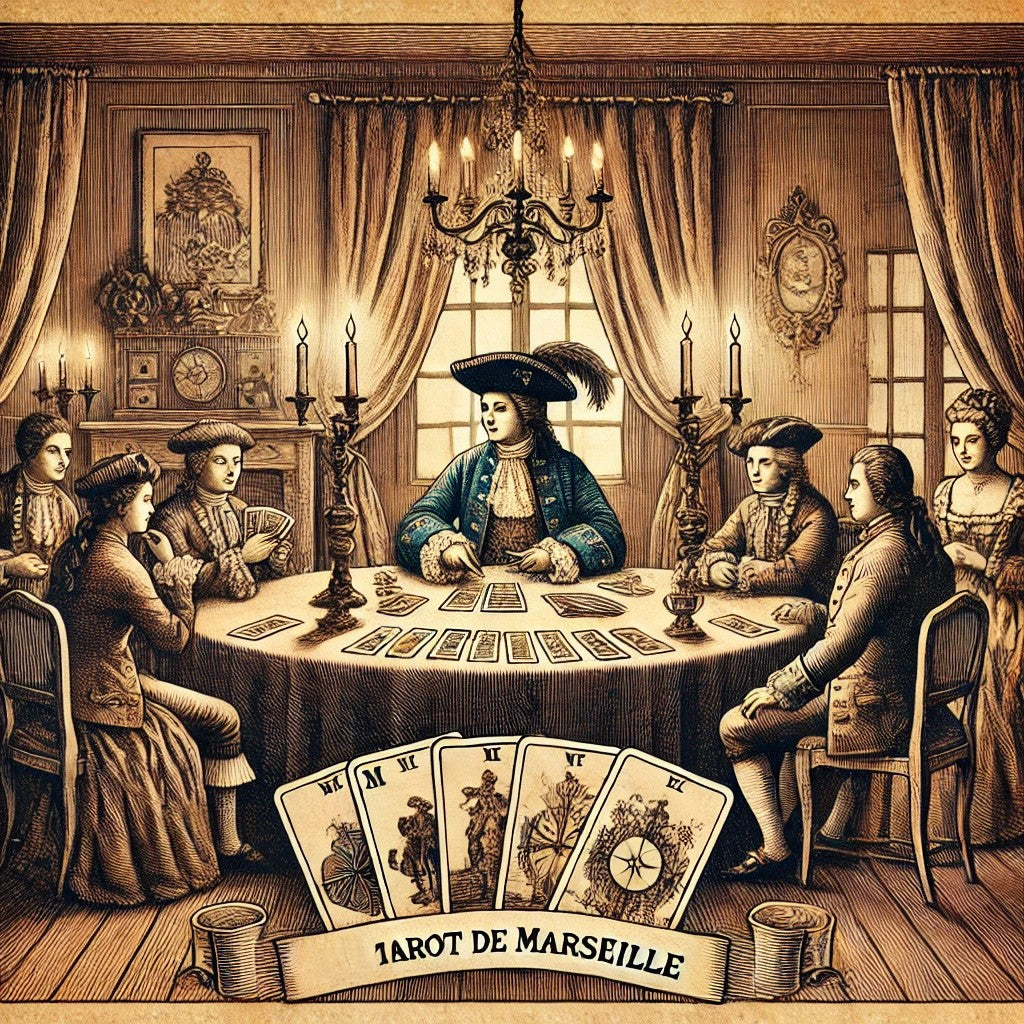Exploring the Tarot de Marseille: An Ancient Pathway to Self-Discovery


Introduction: The Tarot de Marseille is a renowned and historically significant deck of tarot cards that holds a rich tapestry of symbolism and wisdom. Dating back to the 15th century, the Tarot de Marseille has captivated individuals seeking insight, guidance, and self-reflection. In this explanatory text, we will explore the origins, structure, symbolism, and practical applications of the Tarot de Marseille, shedding light on its enduring appeal and relevance in the modern world.
The Tarot de Marseille : Origins and Structure

The Tarot de Marseille originated in Europe, particularly in the southern French city of Marseille, during the Renaissance period. It emerged as a development of the earlier Italian tarot decks and soon gained popularity for its distinct artistic style and emphasis on symbolic imagery. The deck consists of 78 cards, divided into two main categories: the Major Arcana and the Minor Arcana.
The Major Arcana: Tarot de Marseille
The Major Arcana comprises 22 cards, each representing a powerful archetype or universal principle. From "The Fool" to "The World," these cards symbolize fundamental aspects of human existence, personal growth, and spiritual evolution. The Major Arcana cards often depict significant life events or psychological states, providing profound insights into the journey of self-discovery.
The Minor Arcana: Tarot de Marseille
The Minor Arcana consists of 56 cards, divided into four suits: Wands, Cups, Swords, and Coins (also known as Pentacles or Disks). Each suit represents different aspects of human experience, including creativity, emotions, intellect, and material wealth, respectively. The Minor Arcana cards offer practical guidance and highlight everyday situations, challenges, and opportunities encountered in life.
Symbolism and Interpretation of the Tarot de Marseille

The Tarot de Marseille cards are imbued with deep symbolism, making them powerful tools for personal reflection and divination. The imagery in the cards reflects archetypal themes found in mythology, astrology, numerology, and alchemy, among other esoteric traditions. The placement of figures, colors, and geometric patterns within the cards also carries significant meaning.
Interpreting the Tarot de Marseille involves developing an intuitive connection with the cards while considering their traditional meanings. Each card's symbolism and position in a spread contribute to its interpretation. It is important to approach the cards with an open mind, allowing intuition and personal insights to guide the reading.
Practical Applications:
The Tarot de Marseille offers a multitude of practical applications that extend beyond mere fortune-telling. While it can provide glimpses into the future, its true power lies in its ability to illuminate the present and aid in self-discovery. The deck serves as a mirror, reflecting one's thoughts, emotions, and patterns of behavior, enabling individuals to gain clarity, perspective, and guidance.
Tarot readings can be used for personal introspection, decision-making, problem-solving, and gaining deeper insights into relationships, career paths, and spiritual growth. The Tarot de Marseille's symbolic language can help individuals recognize their strengths, uncover hidden influences, and explore alternative perspectives. Moreover, the process of engaging with the cards encourages self-reflection and fosters a greater understanding of oneself and the world.
Conclusion:
The Tarot de Marseille stands as a timeless and powerful tool for personal exploration, offering profound insights and guidance. Its centuries-old wisdom continues to captivate and inspire seekers of truth, providing a pathway to self-discovery and transformation. By delving into the origins, structure, symbolism, and practical applications of the Tarot de Marseille, one can embark on a journey of self-reflection and tap into the universal wisdom held within these beautifully illustrated cards.